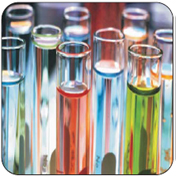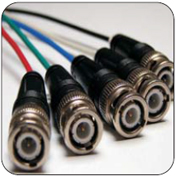Home » Industrial Instruments » Measurement / Analysis » Coating Thickness Measurement & Material & Analysis (Axiom and Cube-X)
Coating Thickness Measurement & Material & Analysis (XRF Compact Eco Model)
We are the leading manufacturer and supplier of Coating Thickness Measurement & Material & Analysis.
| Model |
Compact Eco |
Compact Eco Pin (Si-Pin) |
Compact Eco SDD |
| Measuring Direction |
Top to Bottom |
| Applied Application |
Coating Thickness Measurement on Metals, Gold & Silver Analysis in jewellery and alloys |
| X-ray Tube |
Min-focus, high performance, W-target,
spot 0.2mm-0.8mm |
Long Life, High efficiency tungsten target, air cooled |
| High Voltage |
50kV (1.2mA) Software Control Optimized |
50kV / (1.2mA) programmable |
| Detector |
High resolution Gas Filled Prop Counter |
High resolution Silicon Pin Detector |
Silicon Drift Detector |
| Measurement Time |
60 sec. to 180 sec. |
| Collimator |
0.3mmØ or 0.5mmØ, Optional four positions Collimator changer |
| Sample Stage |
Manual scissors type z-stage, |
| Power Supply |
230V AC, 50/60Hz, 120W / 100W |
| Inside Chamber |
375 mm x 350 mm x 255 mm (LxWxH) |
| Dimension |
630 mm x 430 mm x 420 mm (LxWxH) |
| Weight (Approx) |
45 kg |
| Optional |
Auto Z stage, Joy-Stick real operational movement, point & shoot, auto-focus facility |
| Principal of X-ray Measurement
|

X-ray fluorescence (XRF) spectrometry is an elemental analysis technique with broad application in science and industry. XRF is based on the principle that individual atoms, when excited by an external energy source, emit X-ray photons of a characteristic energy or wavelength. By counting the number of photons of each energy emitted from a sample, the elements present may be identified and quantitated. Aczet's XRF product is based on a German technology, used to measure the composition and purity of materials and is mainly applied in industrial quality control and in process control for manufacturing processes in industries such as Jewellery, Metals and Mining, Construction materials and Chemicals.
| Technology |
Technology |
Major benefits of
XRF |
Different energy dispersive detectors are
available for measurements of XRF, such as proportional counters (PC),
PINdiodes and silicon drift detectors (SDD). The physical principles of
these detectors are very different. A PC uses a mixture of a noble gas
with a quench gas that is ionized by an incident radiation . The
electrons are accelerated in the electric field and can ionize other gas
atoms resulting in an internal amplification. In this case the energy
for generation of the primary signal is relatively high.
In solid state detectors (PIN, SDD), the incident radiation generates
charge carriers which are collected by an electrical field. The energy
to generate the primary signal is significantly lower than for a PC,
i.e. a higher number of primary charge carriers can be generated. This
reduces the statistical error and improves the energy resolution. |
Different energy dispersive detectors are
available for measurements of XRF, such as proportional counters (PC),
PINdiodes and silicon drift detectors (SDD). The physical principles of
these detectors are very different. A PC uses a mixture of a noble gas
with a quench gas that is ionized by an incident radiati n . The
electrons are accelerated in the electric field and can ionize other gas
atoms resulting in an internal amplification. In this case the energy
for generation of the primary signal is relatively high.
In solid state detectors (PIN, SDD), the incident radiation generates
charge carriers which are collected by an electrical field. The energy
to generate the primary signal is significantly lower than for a PC,
i.e. a higher number of primary charge carriers can be generated. This
reduces the statistical error and improves the energy resolution. |
- Versatile testing equipments, potentially solving multiple
testing needs wi th one analyzer.
- Low initial costs compared to other analytical equipment
- Minimum operation costs
- Non-destructive solutions
- Minimal sample preparation
- Instant results 60 to 300 sec.
- Relatively simple technology to learn & obtain accurate,
repeatable results.
- Maximum profits through accuracy
- Increase turn around and production output
- In-house quality control
Aczet’s XRF product is based on a German technology, used to
measure the composition and purity of materials and is mainly applied in
industrial quality control and in process control for manufacturing
processes in industries such as jewellery, metals and mining,
construction materials and chemicals.
Aczet’s XRF product helps customers to improve product qual i t y
and performance, increase productivity, yield and reduce downtime and
waste.
The entire operation, the evaluation of the measurement as well as the
clear presentation of the measurement data is done on a pc using the
powerful and User-friendly Xmaster software. |
| Proportional Counter
Detector |
Proportional Counter
Detector |
| Gas filled proportion counter has distinct
advantages like high efficiency, wide bandwidth larger area where it can
be scaled to almost arbitrarily large size. |
Gas filled proportion counter has distinct
advantages like high efficiency, wide bandwidth larger area where it can
be scaled to almost arbitrarily large size. |
| Silicon Detector
(Si-PIN ) |
Silicon Detector
(Si-PIN ) |
| Based on high resolution Si-PIN is used
for alloys analyzing including precious metals even one step ahead for
accuracy & repeatability compare to Gas filled pro counter. |
Based on high resolution Si-PIN is used
for alloys analyzing including precious metals even one step ahead for
accuracy & repeatability compare to Gas filled pro counter. |
| Features of XMasteR Application
|
X-MasteR is the user-friendly operating software for the modern suit of X-ray systems. This program used most modern software tools available for Windows® operating platforms. The main task of the operating software is the control of all system parameters such as high voltage settings, X-ray tube current, display of collimators and filters as well as the collection and manipulation of the measurement data.
- Empirical calibration mode for calibrating unit using well assessed standard samples.
- Fundamental calibration mode for standard free calibrations.
- Simultaneous quantitative measurement up to 8 elements.
- Qualitative material identification upto 20 elements.
- Spectrum analysis for semi-quantitative concentration measurement.
- Statistical functions with mean value, standard deviation, high/low reading, trend line etc.
- Pre-calibrated for Gold and other precious metals.
 Fasteners
 Hardware
 Connectors
 PCB
 Jewellery
 Electronics
 Liquid
 RoHS
| |
 |
|
|
 |
|











